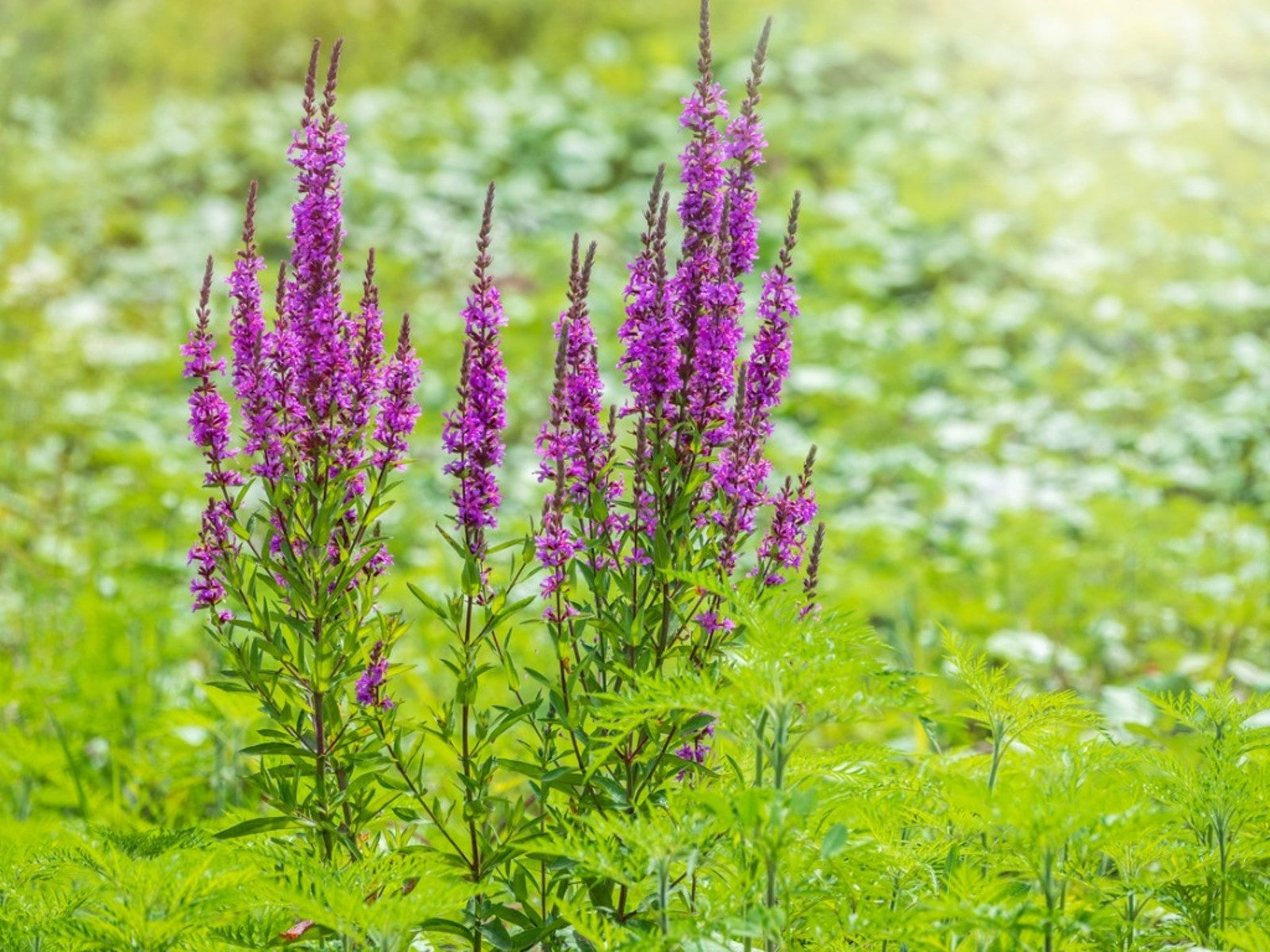Purple Loosestrife Info - Tips For Purple Loosestrife Control


The purple loosestrife plant (Lythrum salicaria) is an extremely invasive perennial that has spread throughout the upper Midwest and northeastern United States. It has become a menace to the native plants in the wetlands of these areas where it chokes out the growth of all its competitors. Purple loosestrife info is readily available from the Department of Natural Resources (DNR) in most of the states affected and is considered a noxious weed.
Purple Loosestrife Info
Coming from Europe, purple loosestrife was introduced to North America some time in the early to mid 1800's, probably by accident, but attempts at purple loosestrife control did not begin until the mid 1900's. It has an aggressive growth habit and because it has no natural enemies (insects and wildlife won't eat it), there is nothing out there to stop the spread of purple loosestrife. Control measures have also been hampered by local gardeners who take the plant home.
The purple loosestrife plant, also called garden loosestrife, is a beautiful plant that can grow 3 to 10 feet (1-3 m.) tall with its woody angular stem. The very things that make it so dangerous to the environment make it appealing to gardeners. Since it is disease and pest free, and blossoms into showy purple spikes from late June to August, garden loosestrife appears to be an ideal landscape addition.
Dying flowers are replaced by seed pods between July and September. Each mature purple loosestrife plant can produce a half million seeds per year. The percentage that will germinate far exceeds the norm.
Dangers of Garden Loosestrife
The greatest danger the aggressive spread of purple loosestrife plants present is to marshes, wet prairies, farm ponds, and most other aquatic sites. They are so prolific that they can take over a site in a single year, making loosestrife plant care difficult. Their roots and overgrowth form dense mats that choke out native plant life and, in turn, destroy the food sources for local wildlife.
Birds can't eat the hard seed. Cattails, an invaluable source of food and nesting material, are replaced. Waterfowl avoid areas overgrown with the insidious loosestrife plant. Care and restoration of affected areas rely on the plants removal.
In some states, noxious weed laws make it illegal to cultivate garden loosestrife. Care should be taken when ordering plants from states still unaffected. Several cultivars are still marketed as sterile varieties. Research has shown that these cultivars may not self-pollinate, but they do cross pollinate with their wild cousins, making them part of the problem.
Gardening tips, videos, info and more delivered right to your inbox!
Sign up for the Gardening Know How newsletter today and receive a free copy of our e-book "How to Grow Delicious Tomatoes".
Responsible gardeners will not plant any form of purple loosestrife, and info about its dangers should be passed along to others. Instead, try growing another variety, such as gooseneck, if loosestrife must be grown as all.
Tips for Purple Loosestrife Control
What can home gardeners do for purple loosestrife control? First and foremost, don't buy it or transplant it! Seeds are still being sold and garden loosestrife seeds are sometimes packaged in wildflower seed mixes. Check the label before you buy.
If your garden already contains purple loosestrife, control measures should be taken. As part of loosestrife plant care control, it can be mechanically or chemically removed. If you choose to dig it up, the best method of disposal is to burn it or you can pack it in tightly tied plastic bags to be sent to your local landfill. For chemical removal, use a vegetation killer that contains glyphosate, but only as a last resort. Organic approaches are safer and much more environmentally friendly.
All gardeners have a special bond with the environment; and by simply spreading purple loosestrife info to others, we can help eradicate this threat to our wetlands. Please do your part for purple loosestrife control.
Note: Any recommendations pertaining to the use of chemicals are for informational purposes only. Specific brand names or commercial products or services do not imply endorsement. Chemical control should only be used as a last resort, as organic approaches are safer and more environmentally friendly.

Jackie Rhoades began writing for Gardening Know How in 2010.
-
 How To Make A Bouquet Garni Or Herb Bundle For Cooking
How To Make A Bouquet Garni Or Herb Bundle For CookingIf you’re a great cook, you may have made an herb bundle before. If this is a new idea, learn how to add sparkle and interest to your dish with a bouquet garni.
By Amy Grant
-
 ‘Coral Charm’ Peony Care For Sublime Semi-Double Peonies With Lush Salmon Pink Flowers
‘Coral Charm’ Peony Care For Sublime Semi-Double Peonies With Lush Salmon Pink FlowersPeonies are known for their soft baby pink or magenta tones, but if plushy coral blooms are your thing, here’s our guide to the ultimate ‘Coral Charm’ peony care
By Tonya Barnett